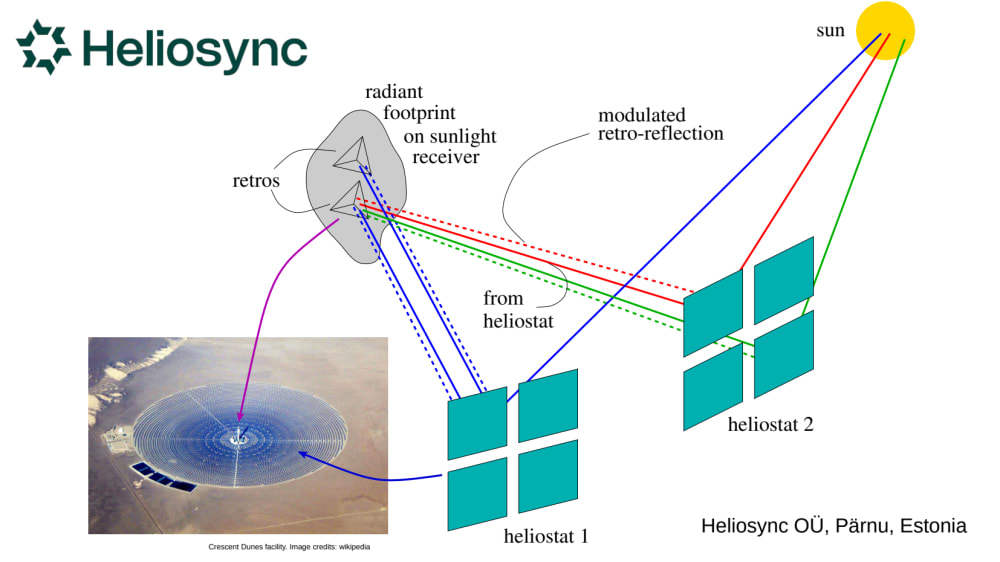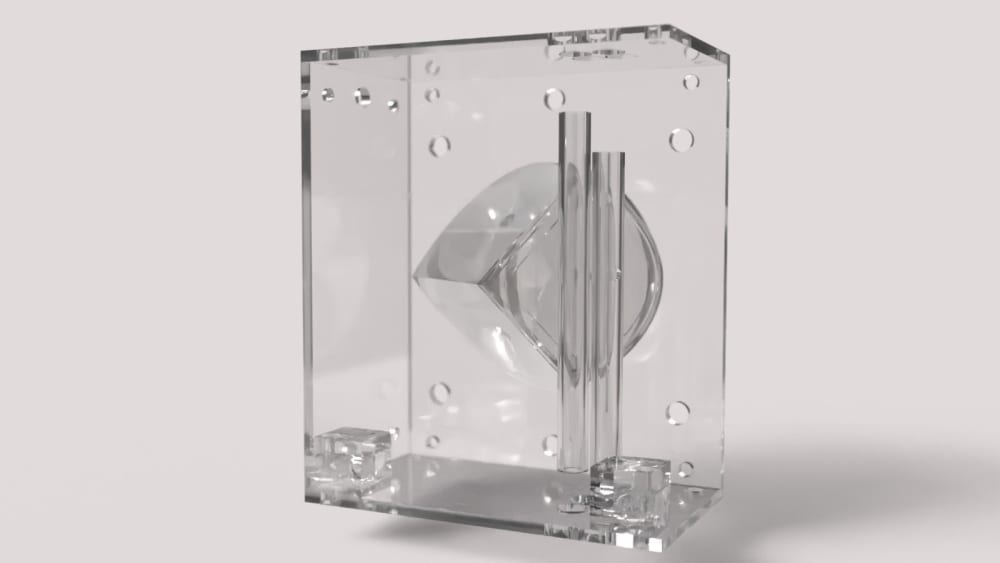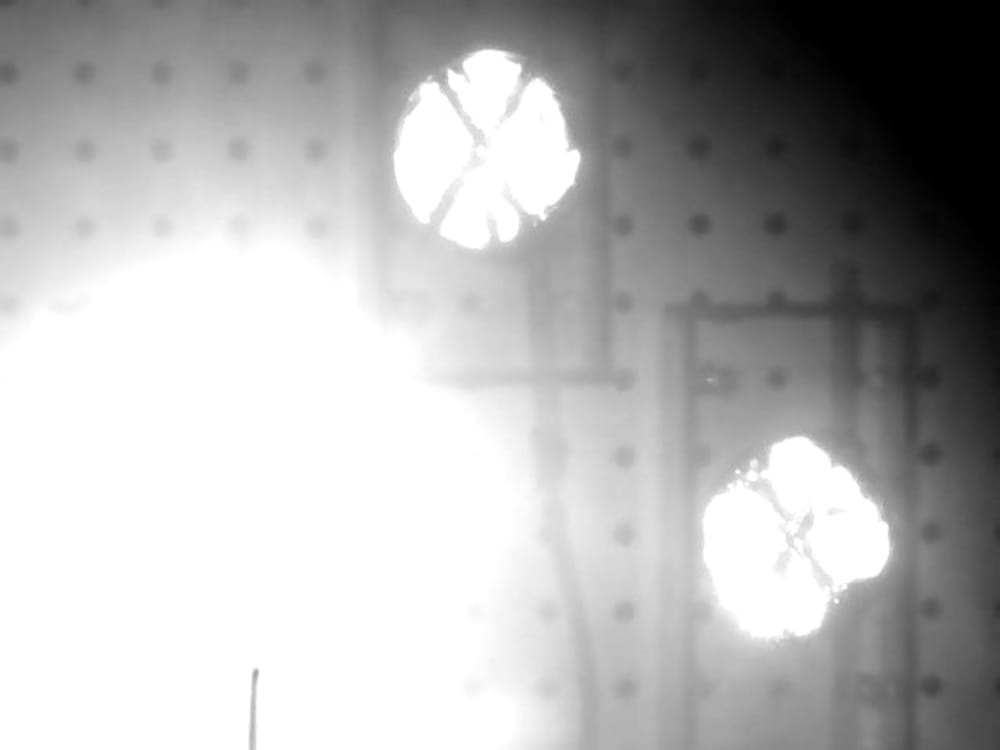Heliosync's invention reduces the cost of concentrating solar power (CSP) and improves its efficiency.
In CSP, a multitude of sun-tracking mirrors (heliostats) direct sunlight onto a central receiver at a distance of up to about a kilometer.
Typically, heliostats follow predetermined trajectories in an open loop. In order to reliably hit the receiver, the heliostats then need to be built massively, i.e., expensively, and they require periodic calibration.
Heliosync's solution enables lightweight inexpensive construction, replacing inherent mechanical stability with Closed-Loop Control (CLC). Furthermore, tighter concentration to the limits of fundamental optics improves the thermodynamic efficiency.
Several CLC schemes have been pursued to-date; Heliosync's solution is unique in:
- providing each heliostat with detailed information of its own radiant footprint on the receiver
- doing so simultaneously for all heliostats, yet independently for each of them
- being based on physical optics and requiring minimal digital communication and computation
At the heart of the invention are retroreflectors ('retros') placed in front of the sunlight receiver (Summary2).
Similarly to bicycle safety reflectors, all incident light rays within an angular range of + - 20 to + - 30 degrees return to their respective origins, here the heliostats. Retroreflections are independent from each other. Thus, each heliostat receives from each retro a sample of its own reflection onto the receiver. Multiple retros provide a map of each heliostat's radiant footprint to that same heliostat. Unlike most other CLC schemes, this requires no digital communication because the information is conveyed by physical optics.
To avoid heating from the concentrated sunlight equivalent to about 1000 suns, the retros and their mounts are made entirely of quartz glass (GlassModel.jpg), which combines superb transparency with high-temperature tolerance (1150C) and thermal-shock resistance. Infrared from the hot receiver is blocked by quartz-glass panes.
In order to discriminate the retroreflections from each other, and to detect them against the brightly lit receiver, the reflectivity of each retro is modulated at a unique frequency of a few Hertz. This is done in an absorption-free way by periodically reflecting or re-directing the light: in an older iteration by spinning the retros (see companion video), and more recently by using a working fluid to suppress the effect of total internal reflection (FlashingRetro.jpg).
A photosensor at each heliostat receives the retroreflected light and demodulates to extract the contributions from the retros. It thus produces a map of the radiant footprint of its respective heliostat, so that the latter can autonomously optimize its pointing according to general instructions.
This CLC concept is highly scalable due to its autonomous per-heliostat operation. It can be retrofitted to existing CSP facilities to improve their efficiency or used in new construction to also reduce heliostat construction cost. It enables higher temperatures for improved thermodynamic efficiency and high-temperature industrial processes.
The concept is internationally patent-pending and is currently undergoing field testing at a full-size CSP facility.
Video
Like this entry?
-
About the Entrant
- Name:Bernhard Adams
- Type of entry:teamTeam members:
- Martin Adams
- Bernhard Adams
- Lutz Tueckmantel
- Patent status:pending








